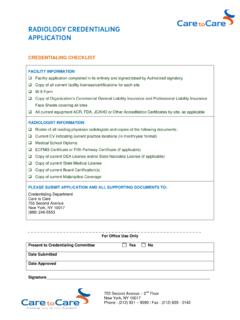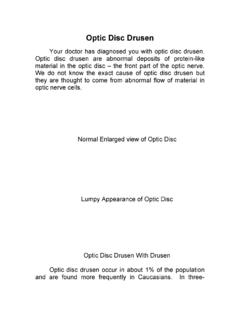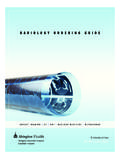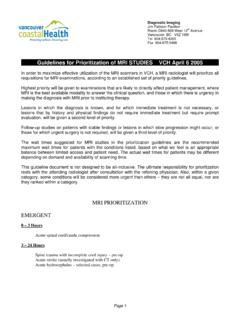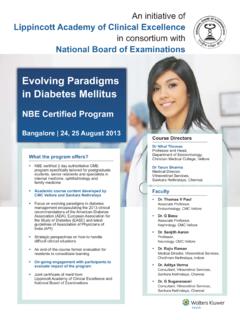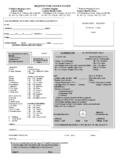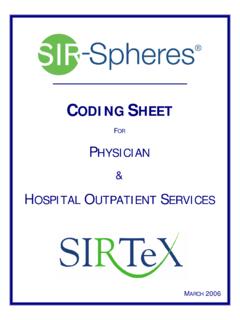Transcription of Guide for the Perplexed formatted1 - Radiology - Cardiology
1 An Imaging Guide for the Busy Physician Care to Care s Brief Reference to Efficient Medical Imaging Michael Komarow MD, JD Chief Medical Officer Care to Care An Imaging Guide for the Busy Physician: Brief Reference to Efficient Medical Imaging Copyright 2010 Care to Care. All rights reserved. 2 3 Abdominal 4 Generalized Abdominal 5 Epigastric or Upper Abdominal 6 Right Upper Quadrant 6 Abdominal Pain, Left Upper 7 Right Lower Quadrant 8 Left Lower Quadrant 9 Chest Pain in Patients Not Seen in 10 11 Low Back 13 Joint 15 16 Vascular Disease 16 Imaging of Cerebrovascular Carotid 17 17 Cardiovascular 18 Peripheral Arterial 19 Obstetrical 21 Care to Care An Imaging Guide for the Busy Physician: Brief Reference to Efficient Medical Imaging Copyright 2010 Care to Care.
2 All rights reserved. 3 PREFACE The amount of information contained in an imaging study is enormous, especially with computed axial tomography and magnetic resonance imaging technologies. This increase in information may be essential for the care of patients, or it may be a distraction in the diagnostic process. Imaging techniques are rapidly evolving, so it is essential to work closely with your radiologist to select the appropriate imaging studies to answer your The most common complaints arise most commonly, and cause the most over utilization of medical imaging. It is our purpose here to provide a quick Guide to appropriate use of imaging examinations to foster prompt and accurate diagnosis.
3 Imaging examinations, from the simplest x-ray to the most complex fused PET-MRI can offer essential diagnostic information, but all have limits. No one benefits if an imaging exam does not reduce the degree of diagnostic uncertainty faced by the treating physician but radiation exposure, expenses, and the risks of false positive results all accumulate. Despite considerable increases in imaging efficiency, radiation dosage from CT remains relatively high, and with it the risk of inducing malignancy. It is poor medicine to expose a patient to any risk without assessment of the potential benefit. About 15% of the ionizing radiation exposure to the general public comes from artificial sources, and almost all of this exposure is due to medical radiation, largely from diagnostic procedures.
4 Of the approximately 3 mSv annual global per caput effective dose estimated for the year 2000, mSv is from natural background and mSv from diagnostic medical exams. Diagnostic and therapeutic radiation was used in patients as early as 1896. Since then, continual improvements in diagnostic imaging and radiotherapy as well as the aging of our population have led to greater use of medical radiation. Temporal trends indicate that worldwide population exposure from medical radiation is increasing. In the United States, there has been a steady rise in the use of diagnostic radiologic procedures, especially x rays. Radiotherapy also has increased so that today about 40% of cancer patients receive some treatment with radiation.
5 Epidemiologic data on medically irradiated populations are an important complement to the atomic-bomb survivors' studies. Significant improvement in cancer treatment over the last few decades has resulted in longer survival and a growing number of radiation-related second cancers. Following high-dose radiotherapy for malignant diseases, elevated risks of a variety of radiation-related second cancers have been 1 LeBlond RF, Brown DD, DeGowin RL, "Chapter 17. Principles of Diagnostic Testing" (Chapter). LeBlond RF, Brown DD, DeGowin RL: DeGowin's Diagnostic Examination, 9th Edition: Care to Care An Imaging Guide for the Busy Physician: Brief Reference to Efficient Medical Imaging Copyright 2010 Care to Care.
6 All rights reserved. 4 observed. Risks have been particularly high following treatment for childhood cancer. Radiation treatment for benign disease was relatively common from the 1940's to the 1960's. While these treatments generally were effective, some resulted in enhanced cancer risks. As more was learned about radiation-associated cancer risks and new treatments became available, the use of radiotherapy for benign disease has declined. At moderate doses, such as those used to treat benign diseases, radiation-related cancers occur in or near the radiation field. Cancers of the thyroid, salivary gland, central nervous system, skin, and breast as well as leukemia have been associated with radiotherapy for tinea capitis, enlarged tonsils or thymus gland, other benign conditions of the head and neck, or benign breast diseases.
7 Because doses from diagnostic examinations typically are low, they are difficult to study using epidemiologic methods, unless multiple examinations are performed. An excess risk of breast cancer has been reported among women with tuberculosis who had multiple chest fluoroscopies as well as among scoliosis patients who had frequent diagnostic x rays during late childhood and adolescence. Dental and medical diagnostic x rays performed many years ago, when doses were presumed to be high, also have been linked to increased cancer risks. The carcinogenic effects of diagnostic and therapeutic radionuclides are less well characterized. High risks of liver cancer and leukemia have been demonstrated following thorotrast injections, and patients treated with radium appear to have an elevated risk of bone sarcomas and possibly cancers of the breast, liver, kidney, thyroid, and bladder.
8 2 Proper choice of which exam to use, and when to use it is therefore crucial. On the pages that follow we have attempted to give a Guide to the proper use of imaging in a variety of non-emergent clinical circumstances. Readers comments and suggestions are welcomed and should be sent to me at Abdominal Pain Paying no heed to the sages who in creating CPT codes divided the abdomen into two parts (abdomen and pelvis) nature recognizes no such border. For our purposes we will consider the abdomen in five parts and just for the sake of being ornery also as the whole. The complex anatomy and multiplicity of structures within the abdomen make such divisions clinically useful, even if there is considerable overlap.
9 In the charts below are listed common (and not so common) causes of abdominal pain and suggestions concerning whether CT or MR are useful in evaluating these particular diagnoses. This presupposes that the history, physical and prior exams have led to the consideration of one of the diagnoses as being the likely source of the patient s pain. Subjecting everyone with abdominal pain to a CT is not only cost ineffective it is a misapplication of a great deal of radiation. Judicious use of imaging can, however, swiftly lead to appropriate care. Please use what follows as a Guide , to be combined with all the other clinical data you compile, and your best judgment. 2 Health Phys.
10 2003 Jul;85(1):47-59. Care to Care An Imaging Guide for the Busy Physician: Brief Reference to Efficient Medical Imaging Copyright 2010 Care to Care. All rights reserved. 5 Generalized Abdominal Pain Differential CTMRC ommentsAbscess Useful Not a Primary Tool Aneurysm Useful As alternative to CT MR may be used of there is contrast sensitivity. Constipation Not a Primary Tool Not a Primary Tool Colonoscopy or flexible sigmoidoscopy and barium enema Ectopic Pregnancy Not a Primary Tool Not a Primary Tool Ultrasound preferred Gastritis Not a Primary Tool Not a Primary Tool Gastroenteritis Not a Primary Tool Not a Primary Tool Inflammatory Bowel Disease Not a Primary Tool Not a Primary Tool Endoscopy generally preferred Intestinal Obstruction Not a Primary Tool Not a Primary Tool Irritable bowel Syndrome Not a Primary Tool Not a Primary Tool Metabolic Disorders Not a Primary Tool Not a Primary Tool Pancreatitis Useful Useful Parasites Not a Primary Tool
